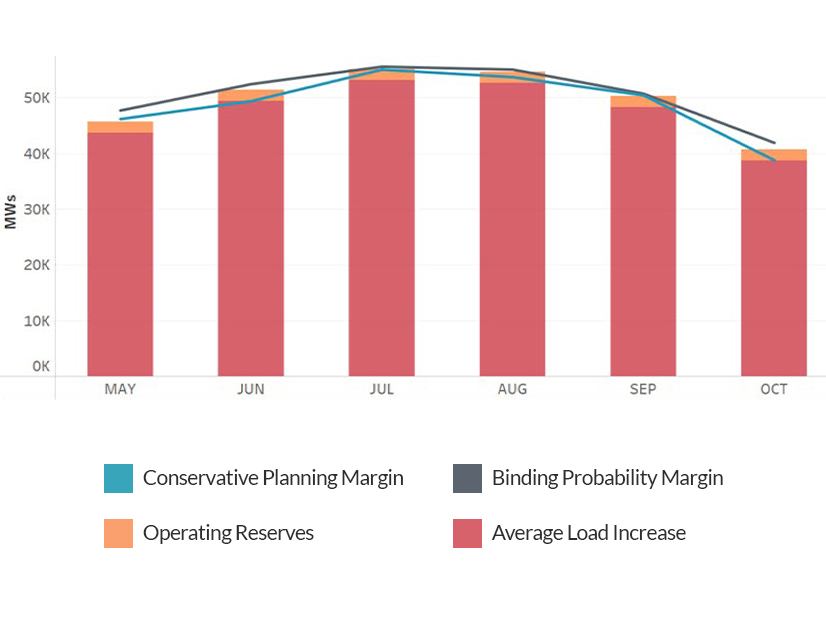RTO Expects ‘Normal’ Summer Operations
SPP said last week it expects “normal” operations in its balancing authority and reliability coordinator areas this summer, with no forecast for extreme operational situations.
According to the grid operator’s summer seasonal assessment, SPP estimates a 99.5% probability that it will have sufficient resources available to serve region-wide load during peak hours. The study found that if load increases by 5% above forecasts, the RTO still has a 95% likelihood that it will maintain resource sufficiency and serve all load.
“We’re expected to be normal this summer,” SPP’s Garrett Crowson said during a May 18 summer preparedness workshop. “It’s possible that we might be tight on certain days, but there are a lot of different avenues that we can use in order to mitigate those issues. We expect to be able to address anything in the near-term horizons, but if there are any high levels of alertness that we need to notify our members, we’re definitely going to be utilizing those existing processes.”
Staff began a seasonal assessment in February and incorporated all capacity and planned outage plans that had been submitted by that time. They included additional outages based on historical experience and other available unknown variables.
“We did a couple of different things in order to stress the system to see if we needed to identify potential mitigations for the summer,” Will Tootle, manager of operational planning, told stakeholders.
That included additional imports and exports with neighboring RC regions and drought conditions that might affect water levels in different rivers. Weather forecasters are predicting extreme to exceptional drought conditions developing in the Central U.S., with low soil moisture increasing daytime surface heat.
“That’s definitely going to have an impact on how different generated resources are going to produce,” Tootle said.
Staff expects transmission constraints and mitigations to be manageable in maintaining required operating criteria.
The grid operator already has issued two resource advisories in May for its 14-state BAA, elevating one of those to a conservative operations call. SPP recorded its highest peak load for May when it reached 34.2 GW, with 2 GW of total reserves, on May 8.
The operating staff has conducted seasonal assessments and presented the results in summer and winter preparedness workshops. The workshops now include the Emergency Communications User Forum, which was created after the February 2021 winter storm.
MMU to Host Market Report Webinar
SPP’s Market Monitoring Unit will host a webinar May 25 at 9 a.m. (CT) to discuss its recently released 2022 market report.
The report identified increasing wind generation, uplift and resource adequacy challenges as continuing issues that deepened last year and played a significant role in the market. It said wind generation has produced many challenges, including increasing variability and supply uncertainty, requiring out-of-market actions to ensure system reliability.
High natural gas prices last year led to increased energy prices in SPP’s markets. Gas prices at the Panhandle Eastern hub rose 69% to $5.83/MMBtu, driving day-ahead and real-time prices to averages of $48/MWh and $43/MWh, respectively, up 80% and 75% from 2021. (See “MMU Report: Energy Prices up,” SPP Board/Members Committee Briefs: April 25, 2023.)


